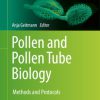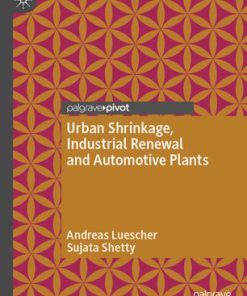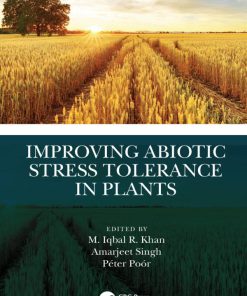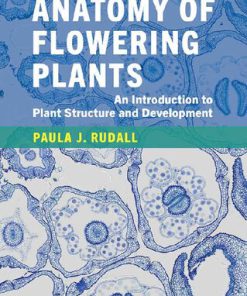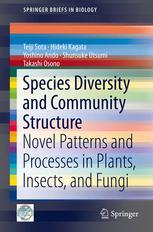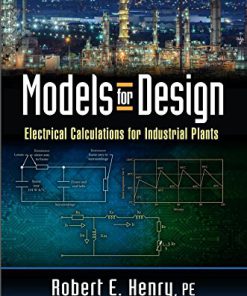Flowering Plants Structure and Industrial Products 1st Edition by Aisha Khan 1119262771 9781119262770
$50.00 Original price was: $50.00.$25.00Current price is: $25.00.
Flowering Plants Structure and Industrial Products 1st Edition by Aisha S. Khan – Ebook PDF Instant Download/DeliveryISBN: 1119262771, 9781119262770
Full download Flowering Plants Structure and Industrial Products 1st Edition after payment.
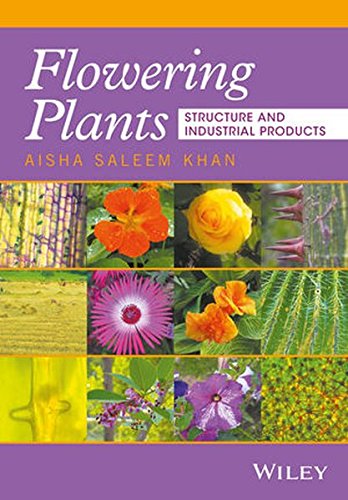
Product details:
ISBN-10 : 1119262771
ISBN-13 : 9781119262770
Author: Aisha S. Khan
Angiosperms, or flowering plants, are one of the most diverse plant groups on the planet, and they offer tremendous resources for a broad range of industries. Flowering Plants examines the anatomy and morphology of angiosperms with a focus on relating their metabolic activities to products for the pharmaceutical, food, cosmetic, and textile industries. This up-to-date reference provides a thorough understanding of plant structure and chemical and molecular processes found in angiosperms. It covers many important topics on applied botany, and therefore, can also be used as a textbook for students of related fields. It details the latest research in the field, along with areas in need of further study, for students, researchers, and professionals working in industry. The book takes advantage of technological innovations to showcase a range of advanced techniques for studying plant structure and metabolites, such as cryo-electron microscopy, ultramicroscopy, x-ray crystallography, spectroscopy, and chromatography. Filled with helpful illustrations, diagrams, and flowcharts to aid comprehension, Flowering Plants offers readers the morphological, anatomic, and molecular knowledge about angiosperms they need for a range of industrial applications.
Flowering Plants Structure and Industrial Products 1st Table of contents:
1 An Introduction to Flowering Plants
1.1 An Introduction to Major Group of Angiosperms: Monocots, Eudicots and Basal Angiosperms
1.2 Plant Cell: Revisions and Few Updates
1.3 Intracellular and Extracellular Communications are Crucial for Cells’ Metabolic Demands
1.4 Future Perspectives
References
Further Reading
2 An Introduction to Angiosperm Natural Products
2.1 Introduction
2.2 Glucose Serves as a Precursor for Formation of Primary and Secondary Metabolites in Plants
2.3 Classification of Natural Products of Angiosperms
2.4 Techniques for Isolation of Secondary Metabolites With Future Perspectives
References
Further reading
3 Plant Tissues Organization of Angiosperms
3.1 Introduction to Plant Tissues
3.2 Diversity of Plant Cell
3.3 Parenchyma is the Main Ground Tissue of Plants
3.4 Collenchyma: Introduction and Distribution
3.5 Sclerenchyma is the Mechanical Tissue of Plants
3.6 Vascular Tissues: Xylem and Phloem
3.7 Phloem
3.8 Future Perspectives
References
Further reading
4 Floral Cell Biology and Diversity in Floral Cells
4.1 Introduction to Angiosperms Flowers: Monocots and Eudicots
4.2 Morphological & Anatomical Characteristics of Eudicot Flowers
4.3 Morphology of Monocots Flowers
4.4 Channels and Transporters Within Floral Cells
4.5 Future Perspectives
References
Further Reading
5 Signaling During Sexual Reproduction in Angiosperms
5.1 Introduction
5.2 Angiosperms Show Diversity in Their Sporophytic and Gametophytic Generations
5.3 Angiosperms Spend Most Part of Their Lives as Sporophytes and Produce Gametophytes for a Shorter Period of Time
5.4 Septs From Pollination to Fertilization
5.5 Future Perspectives
References
Further reading
6 Physiologically Active Metabolic Pathways in Floral Cells
6.1 Introduction to Floral Physiology
6.2 Glucose Fates in Floral Cells Differ According to Their Metabolic Demands
6.3 PPP Provides Floral Cells With Their Nucleotides and Important Pigments
6.4 ATP and NADPH Produced Through Photochemical Reactions Provide Energy for Sugar Formation in Stroma of Chloroplasts
6.5 Floral Photosynthesis Contributes to Sugar Requirements of Floral Whorls
6.6 Future Perspectives
References
Further Reading
7 Anthocyanins
7.1 Anthocyanins Accumulation in Different Organs Is Indicative of Their Multiple Roles
7.2 Anthocyanidin Biosynthesis Takes Place in Cytosol of Cells, However, They Are Accumulated in Vacuoles
7.3 Anthocyanins Exist in Modified Forms in Cells
7.4 Anthocyanins Transport to Vacuoles
7.5 Anthocyanins Role is Dependent Upon Their Location and Accumulation
7.6 Industrial Applications of Anthocyanins
7.7 Future Perspectives
References
Further Reading
8 Carotenoids: Introduction, Classification and Industrial Uses
8.1 Carotenoids are Vital for Leaves as Light Absorbing Pigments and for Flowers to Attract Their Pollinators
8.2 Oxygenated and De‐oxygenated Carotenoids are Major Carotenoids in Angiosperms
8.3 Carotenoid Biosynthesis is Under the Control of Transcriptional Regulation
8.4 Carotenoids are Localized in Plastids in Form of Crystals and Plastoglobuli
8.5 Carotenoids Accumulation Takes Place in Chromoplasts of Autumn Leaves of Eudicots
8.6 Carotenoids Pigments in Flowers and Pollens
8.7 Lutein are Important Antenna and Photoprotective Pigments in Thylakoids of Chloroplasts
8.8 Capsaicin is a Carotenoid Derivative Which Causes Hotness of Capsicum spp.
8.9 Carotenoid Accumulation in Epidermal Cells of Many Fruits is Due to Conversion of Chloroplast Into Chromoplasts
8.10 Transcriptional Regulation of Carotenoids in Fruits
8.11 Application in Food, Pharmaceutical, Cosmetic, Textile and Nutracuetical Industries
8.12 Future Challenges
References
Further Reading
9 Alkaloids Biosynthesis, Translocation and Industrial Products
9.1 Alkaloids are Nitrogen‐Containing Natural Products Which Provide Defense Against Herbivores
9.2 Alkaloids are Synthesized in Cytosol and Accumulated in Vacuoles as They are Toxic for Plant Cells
9.3 Purine Nucleotides Serve as Precursors of Caffeine Synthesis
9.4 History of Discovery of Caffeine
9.5 Theobromine is an Alkaloid Widely Used in Chocolates and Teas
9.6 Clinical Applications of Alkaloids are Due to Their Mode of Action
9.7 Development of Physiologically Functional Food Containing Alkaloids as Food Vaccines
References
Further Reading
10 Nectaries, Carnations and Ornamental Hybrid Flowers in Floriculture
10.1 Introduction
10.2 Nectaries are Nectar Synthesizing Structures of Plants
10.3 Ornamental Transgenic Plants in Floriculture
10.4 Dianthus spp. are Major Carnations in Floriculture
10.5 Future Perspectives in Floriculture Industries
References
Further Reading
11 Floral Essential Oils: Biosynthesis, Classification and Commercial Applications
11.1 Fragrance Formation is a Unique and Genetically Controlled Characteristic of Many Angiosperms
11.2 Number of Carbon and Hydrogens Atoms in Isoprene Units Determine Their Roles in Plants
11.3 Many Terpenoids are Insecticidal and Act as Allelochemicals
11.4 Sesquiterpenes are Defensive Terpenoids of Many Plants
11.5 Diterpenoids are Important Phytohormones Which Comprise of Four Isoprenoid Inits
11.6 Terpenoid Biosynthesis in Plants Proceeds in Two Different Cellular Compartments
11.7 Economically Important Terpenoids
11.8 Future Challenges
References
Further Reading
12 Aromatic Molecules From Flowers in Perfume and Cosmetic Industries
12.1 Introduction and Overview of Perfume and Cosmetic Industries
12.2 History of Perfume Making
12.3 Aromatic Flowers, Leaves and Woods Used in Perfumery
12.4 Traditional and Modern Techniques of Distillation and Isolation of Fragrant Molecules
12.5 CO2 as a Solvent to Extract Fragrant Molecules in Super‐critical CO2 Fluid Extraction Method
12.6 Modern Perfume Making Machines
12.7 Aromatherapy: Relaxation Through Aromatic Molecules
12.8 Cosmetic Industry: An Overview and History
12.9 Popular Plants and Their Products in Cosmetic Products
12.10 Anti‐Aging Properties of Some Plants and Their Applications in Cosmetic Products
12.11 Bioengineered Aromatic Bacteria With Lemon and Rose Fragrances
12.12 Future Considerations
People also search for Flowering Plants Structure and Industrial Products 1st:
flowering plants structure and organization
flowering plant structure and function
flowering plant structure
industrial plants examples
types of industrial plants
Tags: Flowering Plants, Structure, Industrial Products, Aisha Khan
You may also like…
Politics & Philosophy
Jihad & Co.: Black Markets and Islamist Power 1st Edition Aisha Ahmad
Politics & Philosophy
Biology and other natural sciences - Plants: Agriculture and Forestry
Improving Abiotic Stress Tolerance in Plants 1st Edition M. Iqbal R. Khan (Editor)
Biology and other natural sciences - Plants: Botany
Anatomy of Flowering Plants 4th Edition by Paula Rudall ISBN 1108749127 978-1108749121
Science (General)
Medicine - Natural Medicine



